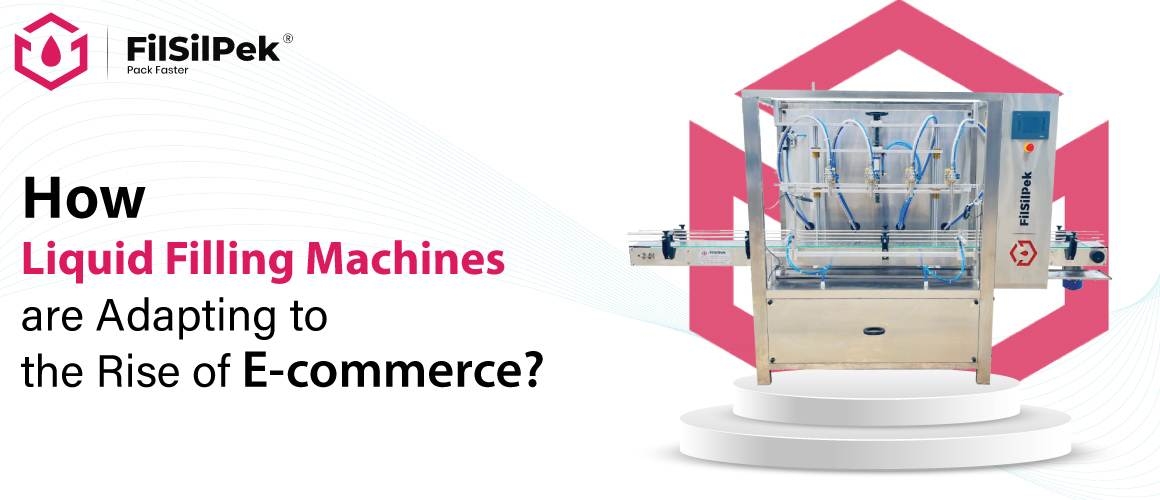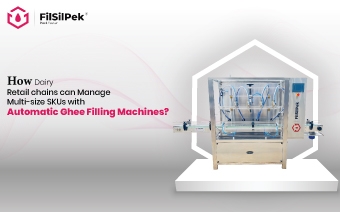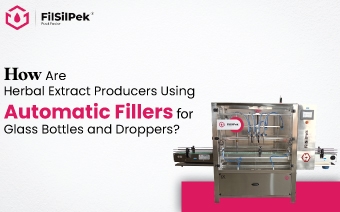How Liquid Filling Machines are Adapting to the Rise of E-commerce?
The rapid expansion of e-commerce has significantly altered supply chains, reshaping how products are manufactured, filled, and delivered. For industries dealing with liquid products—ranging from beverages to household chemicals—the shift to online retail has introduced new demands for speed, accuracy, and adaptability in production processes. Liquid filling machines are one of the major differentiators and also continuously evolving to meet the upgrading needs of the growing digital marketplace.
Here in this article, you will experience an in-depth insight of how these machines are adapting to the challenges and opportunities presented by the rise of e-commerce.
1. Enhanced Speed and Flexibility in Production Lines
E-commerce has intensified the need for agile manufacturing processes, requiring liquid filling machines to operate at higher speeds while maintaining accuracy. To meet this demand, modern filling machines are equipped with advanced servo-driven systems that provide precise control over filling speeds and volumes. This allows manufacturers to increase throughput without compromising on product quality.
Moreover, the diversification of product sizes and packaging formats driven by online retail has necessitated greater flexibility. Advanced filling systems now feature quick-change components and modular designs, enabling seamless transitions between different container shapes and sizes. This capability is essential for handling the wide variety of packaging that e-commerce orders entail, from small sample bottles to large bulk containers, often within the same production run.
2. Integration of Smart Technologies for Precision and Consistency
Accuracy is inevitable in e-commerce, where filling errors can lead to negative customer feedback and costly returns. To address these challenges, Advanced automatic liquid filling machines are integrating smart technologies such as sensors, programmable logic controllers (PLCs), and artificial intelligence (AI). These technologies monitor and adjust filling parameters in real-time, ensuring consistent fill levels and reducing wastage.
Advanced flow metres and vision systems are increasingly used to detect anomalies, such as overfills or underfills, during the filling process. These systems can automatically adjust machine settings to correct any deviations, enhancing the reliability and accuracy of the filling operation. The incorporation of data analytics allows manufacturers to optimise their processes by analysing performance trends and identifying areas for improvement.
3. Sustainability and Resource Efficiency
Sustainability is becoming a critical factor in e-commerce, as consumers and regulatory bodies place greater emphasis on environmental responsibility. Automatic Liquid filling machines are adapting by incorporating energy-efficient components and reducing waste through accurate filling technologies. For example, machines equipped with no-drip or anti-splash filling nozzles help minimise product loss and keep workspaces clean, reducing the need for additional cleaning resources.
Many modern machines are also designed with reduced water and energy consumption in mind, integrating features like energy-saving motors and automated shutdown protocols during idle times. Additionally, innovations in material compatibility allow for the handling of eco-friendly packaging materials, supporting broader sustainability goals.
4. Automation and Integration with End-of-Line Systems
E-commerce’s just-in-time fulfilment model requires that products are filled, capped, labelled, and packaged efficiently and accurately. To achieve this, liquid filling machines are increasingly being integrated into fully automated end-of-line systems. These systems combine filling, capping, labelling, and case-packing in one continuous flow, reducing manual intervention and enhancing overall line efficiency.
Automation also enables seamless integration with warehouse and order management systems, facilitating rapid response to order fluctuations. This level of integration allows manufacturers to better synchronise production schedules with demand forecasts, minimising inventory costs and reducing lead times. As a result, companies can more effectively manage the frequent batch changes characteristic of e-commerce operations.
5. Remote Monitoring, Diagnostics, and Predictive Maintenance
As production facilities become more connected, remote monitoring and diagnostics are becoming standard features in liquid filling machines. Using Internet of Things (IoT) technology, machines can transmit performance data in real-time, allowing operators to monitor the status of equipment remotely. This capability is particularly valuable for businesses managing multiple production sites or those with extended operating hours to meet the demands of global e-commerce markets.
Predictive maintenance systems use data analytics and machine learning algorithms to identify potential equipment failures before they occur. By analysing variables such as vibration, temperature, and cycle counts, these systems can schedule maintenance at optimal times, reducing unexpected downtime and extending the life of critical components. This approach not only enhances operational efficiency but also reduces maintenance costs and improves overall equipment effectiveness (OEE).
6. Adapting to Smaller Batch Sizes and Customization
E-commerce has led to a shift towards smaller batch sizes and increased product customization, as brands cater to niche markets and personalised consumer demands. Liquid filling machines are adapting to these trends by offering rapid changeover capabilities and advanced control systems that accommodate frequent product switches.
Innovations such as multi-head filling systems and servo-driven adjustability enable manufacturers to run different product formulations and container sizes with minimal setup time. These machines can also store multiple filling recipes in their control systems, allowing operators to switch between products quickly, supporting the flexibility needed to compete in a growing and changing marketplace.
Conclusion
The rise of e-commerce has fundamentally changed the subject of liquid filling, driving manufacturers to adopt more advanced, flexible, and efficient technologies. With the integration of smart automation, sustainable practices, and enhanced adaptability, liquid filling machines are keeping pace with the demands of online retail and at the same time they are setting new standards for efficiency and reliability in production.
As e-commerce continues to grow, these innovations will be critical in ensuring that manufacturers can meet customer expectations, manage operational costs, and remain competitive.
Do you also want to stay competitive in growing e-commerce business? – Call our experts now or write us your requirement at [email protected]
How dairy retail chains can manage multi-size SKUs with automatic ghee filling machines?
For dairy retail chains, offering ghee in various pack sizes has become …
How does liquid filling automation ensure safety and accuracy in chemical labs?
Chemical laboratories work with a broad spectrum of substances—acids, solvents, reagents, and volatile..
How Are Herbal Extract Producers Using Automatic Fillers for Glass Bottles and Droppers?
Herbal extract producers are under increasing pressure to meet demand…



